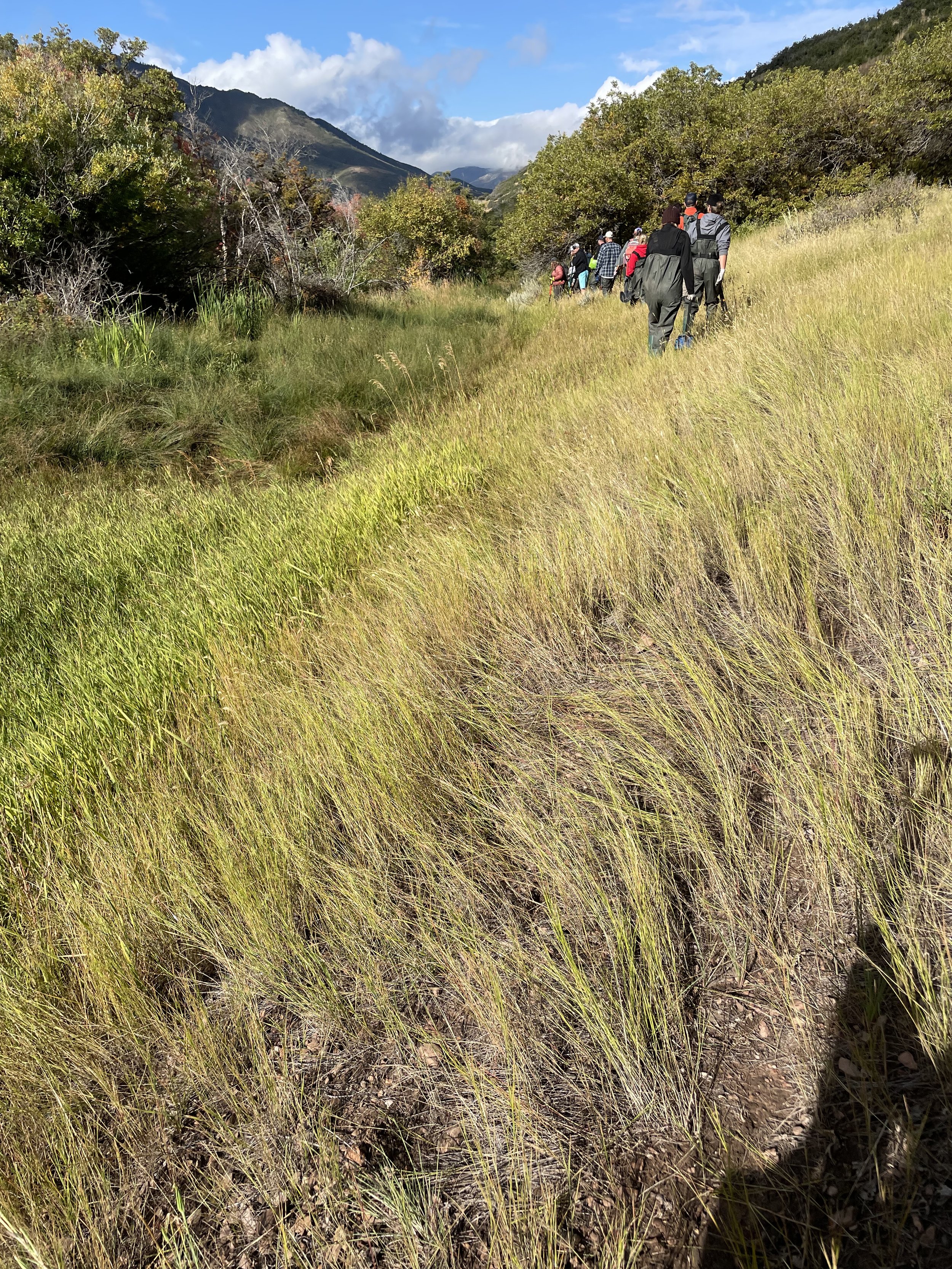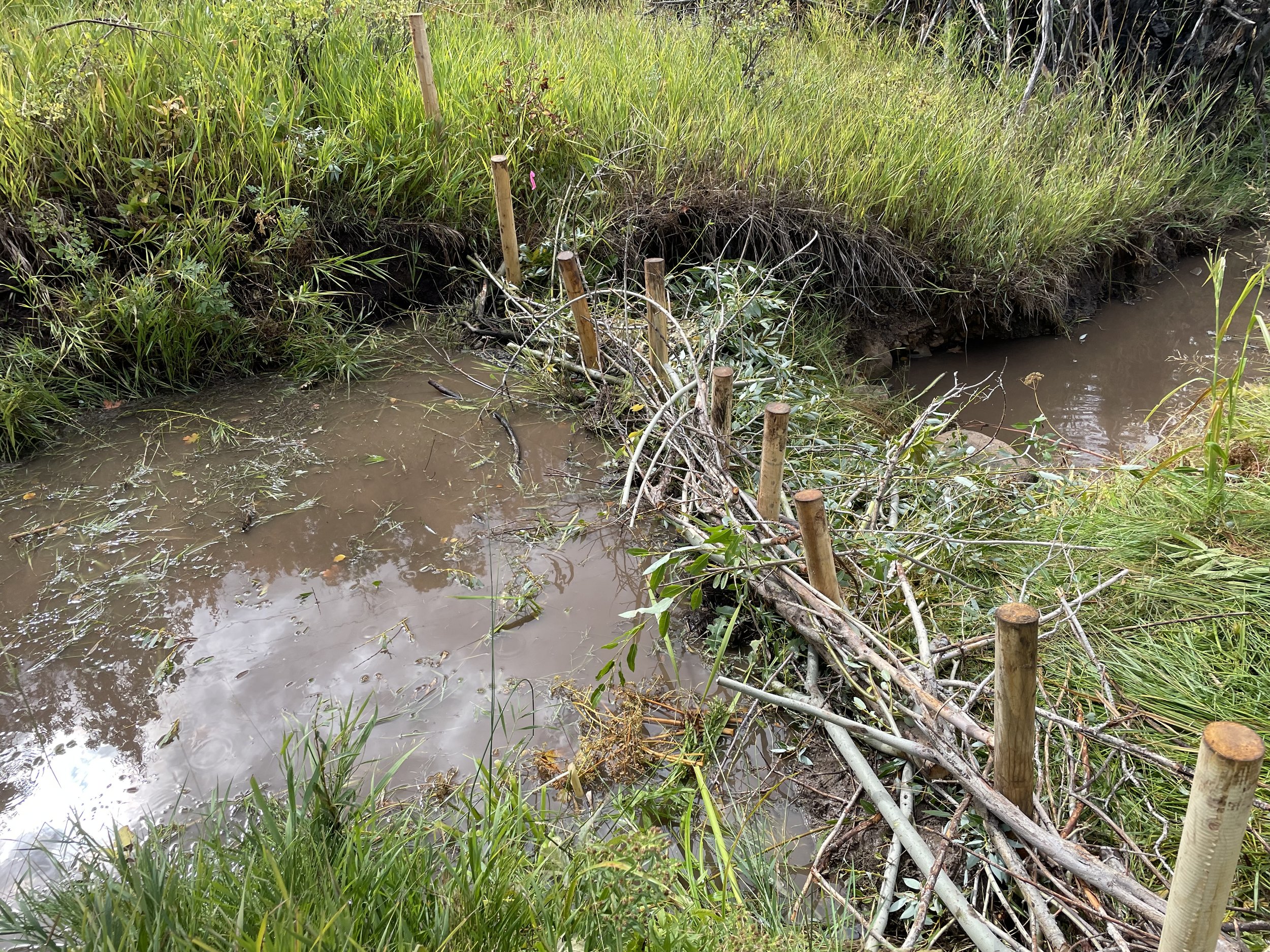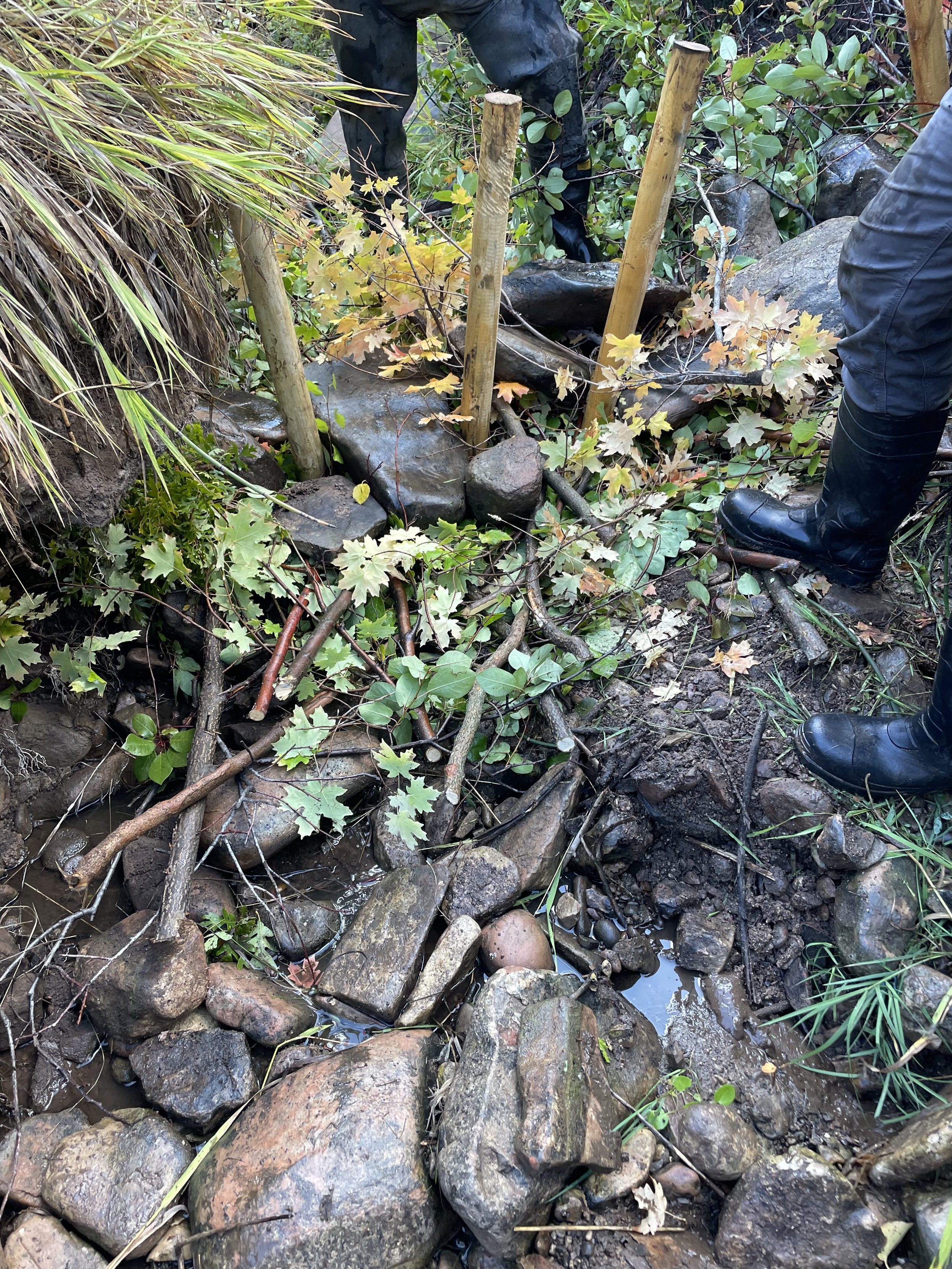This is the Dam Place
A group gathered at an informal parking area overlooking Parley’s Creek, donning a variety of waders borrowed or brought from home. Rose, a Stream Ecologist from Sageland Collaborative began to explain the action plan for today, and we all grabbed shovels and pruning shears before descending the hill towards the creek. We were here for a volunteer stream restoration day through Sageland Collaborative to participate in the construction of Beaver Dam Analogs, or BDAs. We stopped once or twice along our trek to the project location, to see examples of previous restoration work, and its effectiveness. Where BDAs were now in place, water from the creek formed deep pools.
Trek to the project location
Beaver Dam Analog built by past volunteers
Approaching our project site, one of the group leaders pointed to the narrowing creek bed, flowing shallow with water and cutting almost surgically into the bank. They explained that what was happening there was called an incised stream bank. With nothing to slow the flow, the water cuts fast and deep into the bank, deeper and deeper away from the plants that border the stream that depend on the nutrients the water carries. The exposed roots hung like stalactites over dry earth where the stream cut away from the bank.
Incised bank
The creeks in Utah were once home to populations of beavers, who helped slow water flow through the construction of their dams. Slow moving water that pools up helps to spread nutrients, promote healthy ecosystems and can act as a form of flood prevention. As the beaver populations declined, so did the health of our local creeks. With their recurring annual BDA projects, Sageland Collaborative invites volunteers to help pick up where the beavers left off, and strategically build Beaver Dam Analogs in many of our local creeks. The locations for the projects are first scoped out and then marked with wooden posts. Every other component of these BDAs is sourced, right there, from the surrounding landscape. Rocks are piled in a line across the stream, or in this case mostly dry stream bed. Then mud is added into the rock pile to help fill any gaps. Branches from the trees surrounding the creek are then woven in-between the stakes on top of the rock and mud—taking only one out of every six branches in order to not over-prune any one plant. Finally, some branches are woven into this structure perpendicular to the BDA, in order to help cushion the water flow once it pools to overflow the small dam. This, as was explained to us, is called the mattress. We complete several of these BDAs throughout the morning, watching water slow and dry incised stream beds turn into nutritious water pools. As we trek back up the hill to wrap up the day and return our tools, the overcast sky erupts into rainfall and hail, as if it had been waiting for us to finish our stream restoration work before saturating the watershed.
Building the BDA
BDA building process
Being stewards of the places we inhabit is an important way to recognize our role and impact on place, and to form a more active and positive relationship with our habitat. Sageland Collaborative is one of several local organizations in Utah that are working to build a more symbiotic relationship with our environment. The narrative of humanity’s interface with nature doesn’t have to be a destructive one, if only we accept our role in our ecosystems and help protect them. For Sageland, the invitation is always open to participate and learn more about this type of work, and it’s an invitation we will gladly accept again in the future.
Newly built BDA completed by the day’s volunteers







